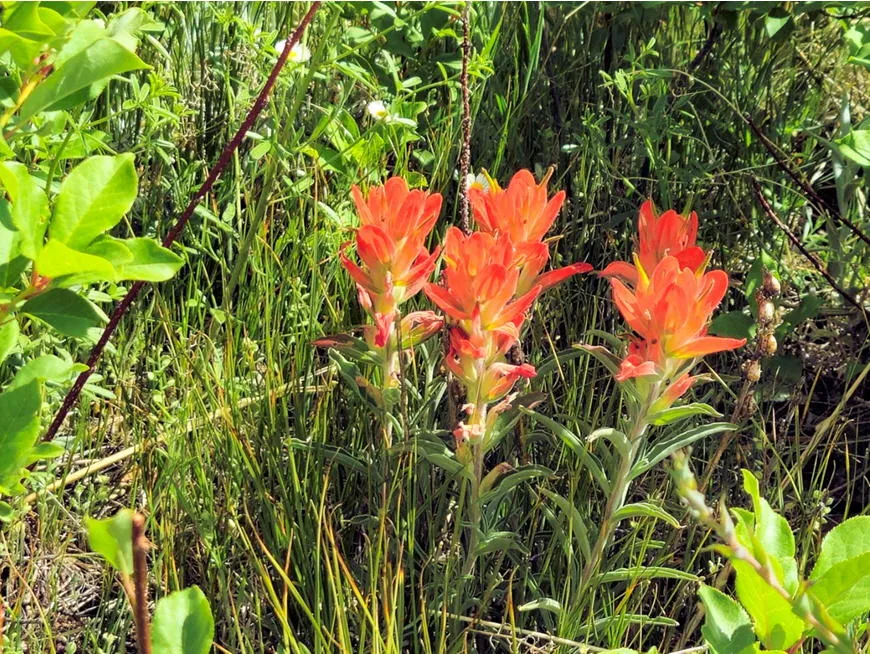By Tom Schweich
“Wholeleaf Indian Paintbrush” (Castilleja integra A. Gray) is a common sight in every Golden open space from Dakota Ridge in the north to Tin Cup Ridge in the south. In Jefferson County, it is found in the foothills and on the plains of the northern part of the county, but no further south than Buffalo Creek. Its native range includes Arizona, Colorado, New Mexico, Texas, and much of northern Mexico.
Castilleja integra was first scientifically observed in 1849 in the Organ Mountains of southern New Mexico near El Paso, Texas, by Charles Wright, a member of an army expedition. Later, Wright joined the Mexican Boundary Survey, the most comprehensive vegetative investigation ever conducted on the 1,969-mile border between Mexico and the United States. The U.S. government commissioned the survey to map and mark the new boundary that resulted from the 1848 Treaty of Guadalupe Hidalgo. Wright’s collection of our plant was published in the 1859 Report on the United States and Mexican Boundary Survey.
Castilleja integra is termed a hemi-parasite because it can photosynthesize to produce at least some of its own energy, but it is partially dependent on a host plant for healthy growth. Typical host plants found around Golden are Fringed Sage (Artemisia frigida), Rubber Rabbitbrush (Ericameria nauseosa) and Spotted Gayfeather (Liatris punctata). Some grasses, e.g., Blue Grama (Bouteloua gracilis), are also thought to be host plants.
Hummingbirds are frequent pollinators of Castilleja integra including the rufous hummingbird, broad-tailed hummingbird, and black-chinned hummingbird, due to the good nectar flow, each flower producing about 2 milligrams of sugar in its nectar each day.




